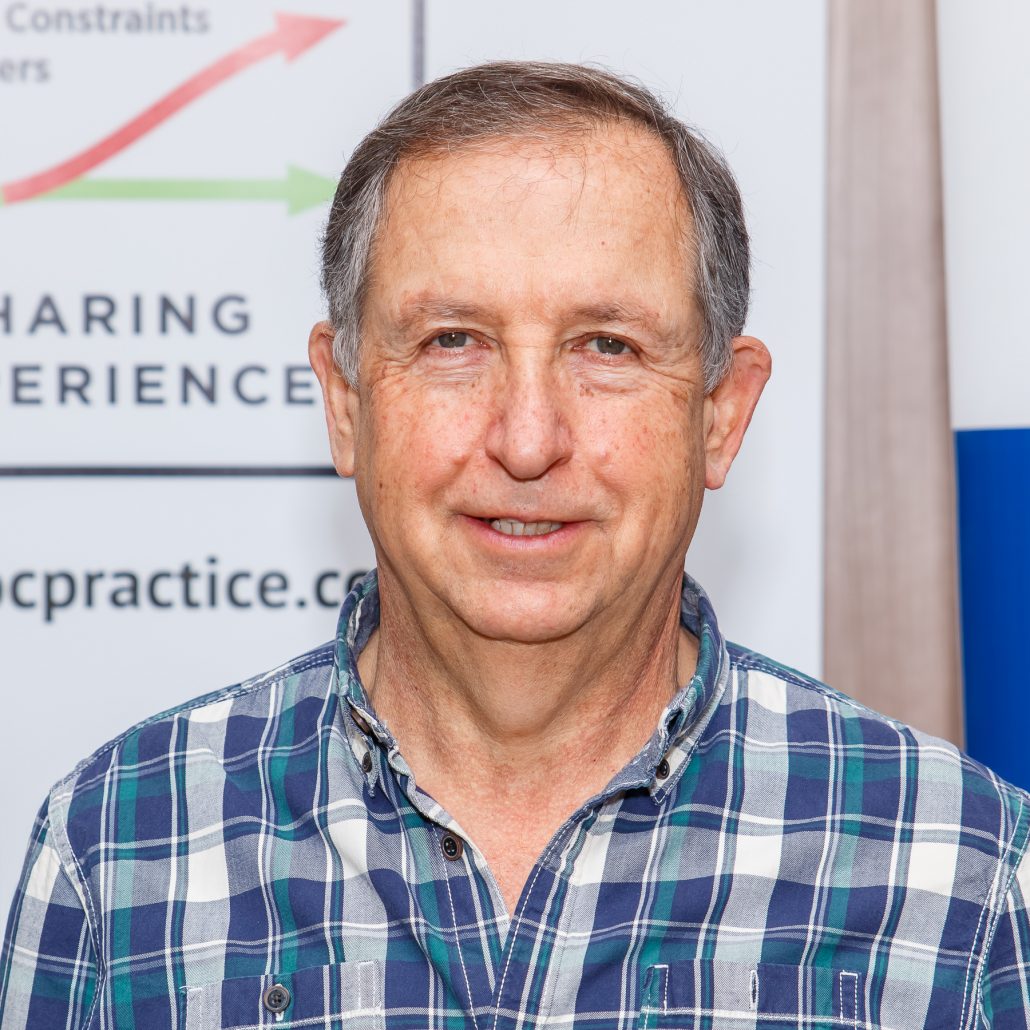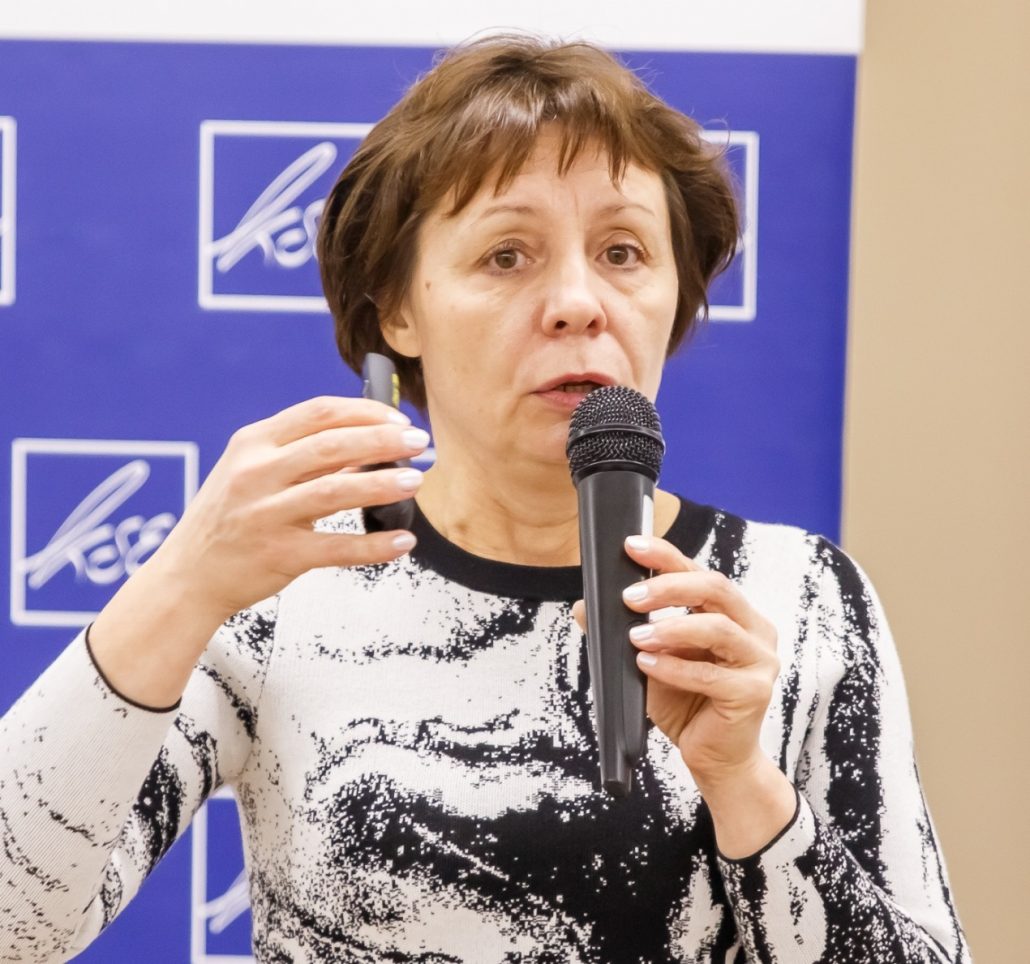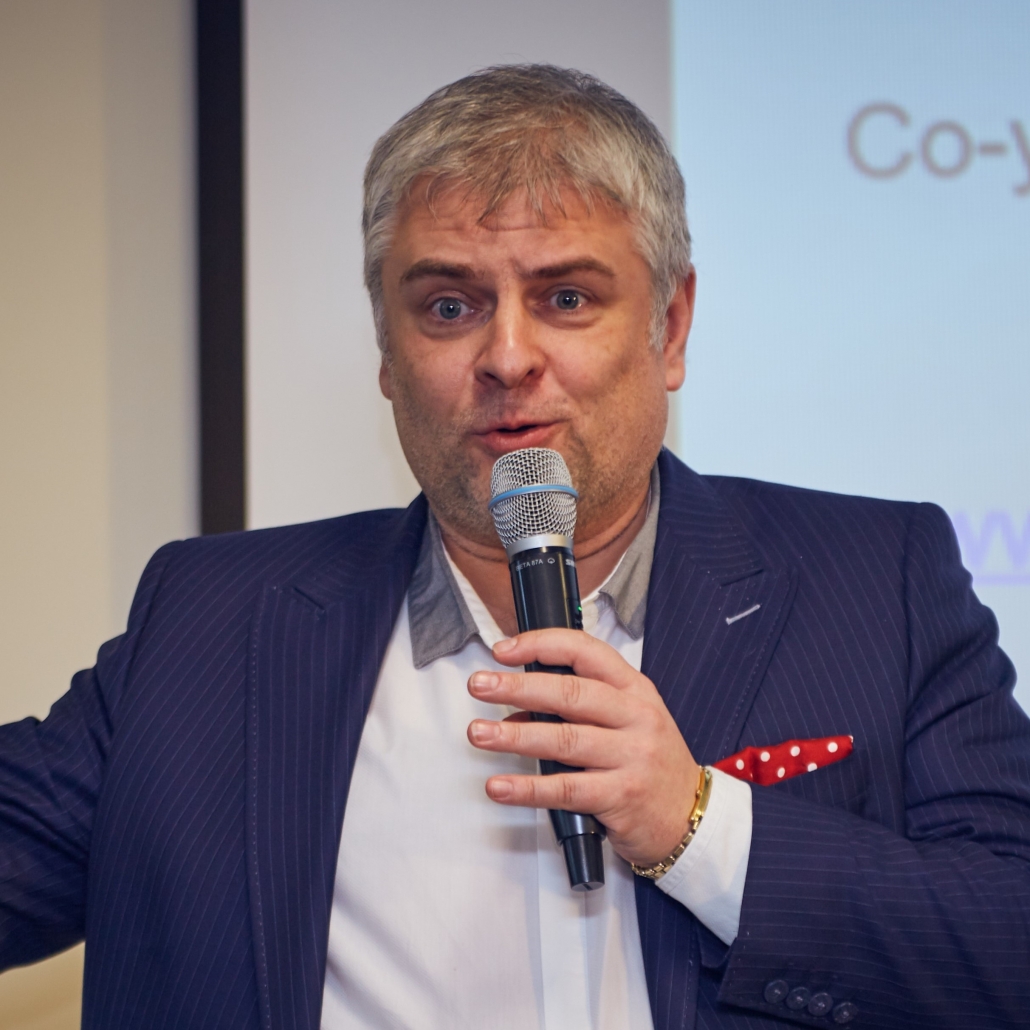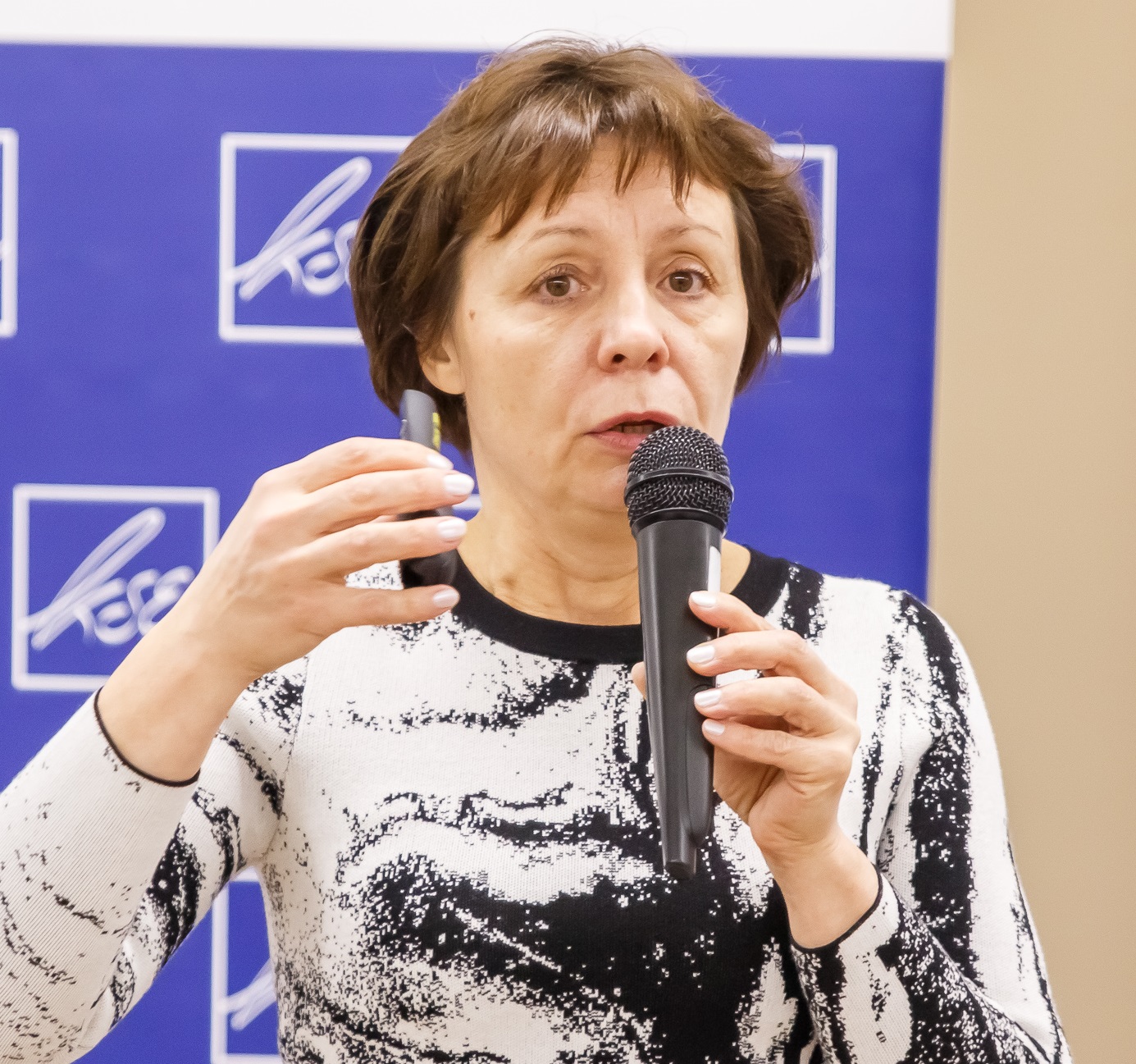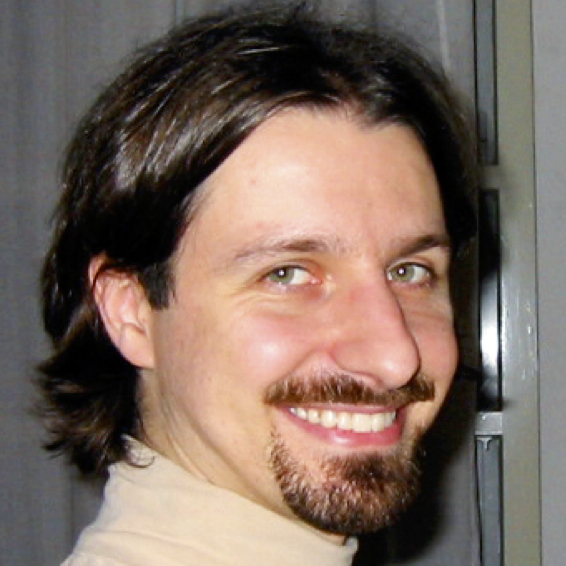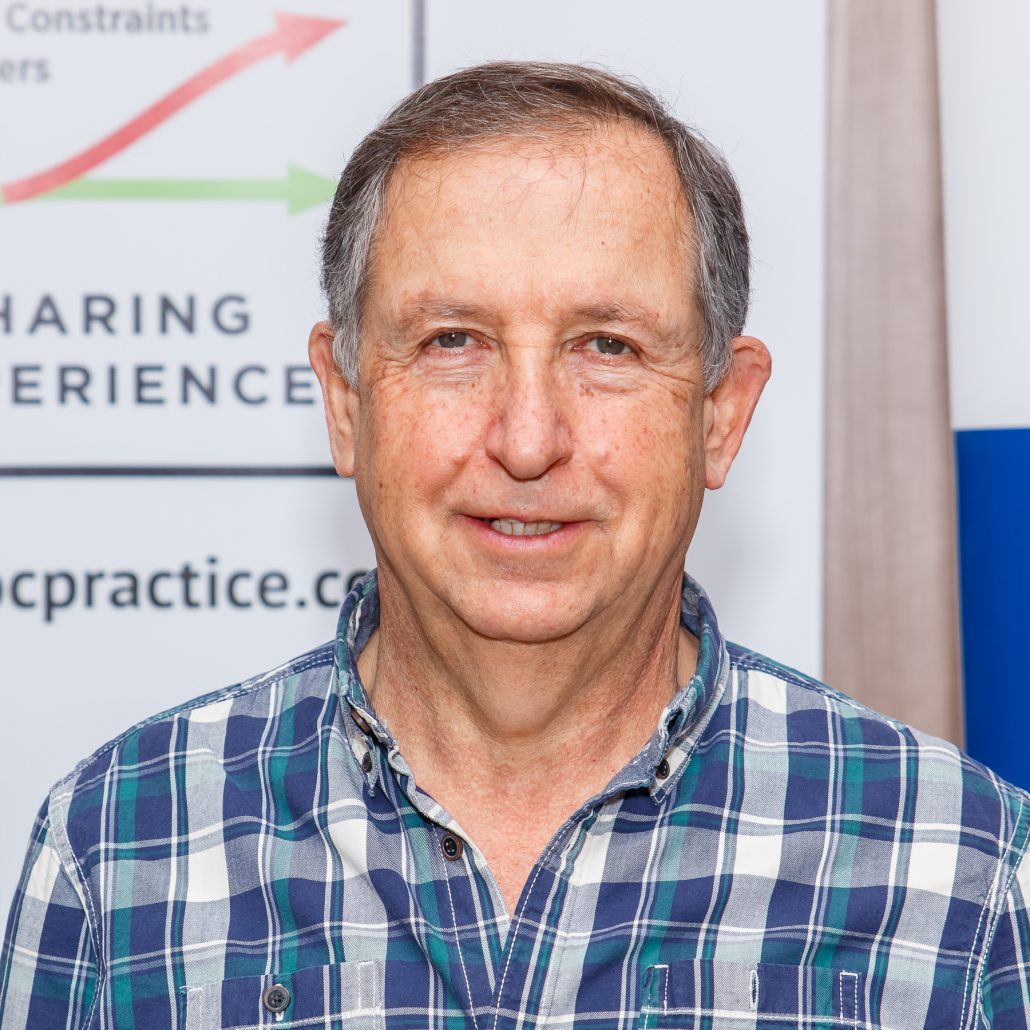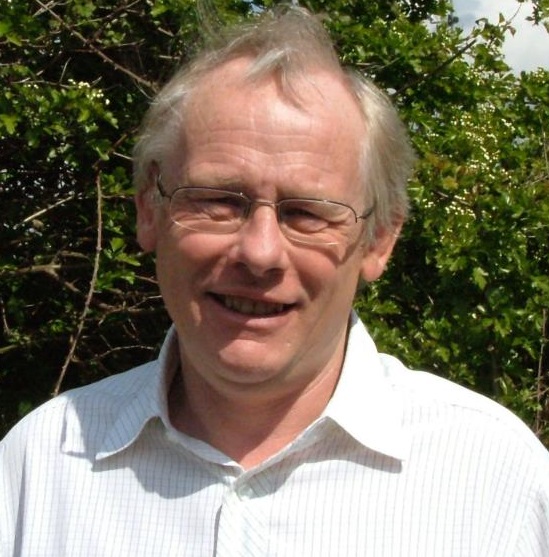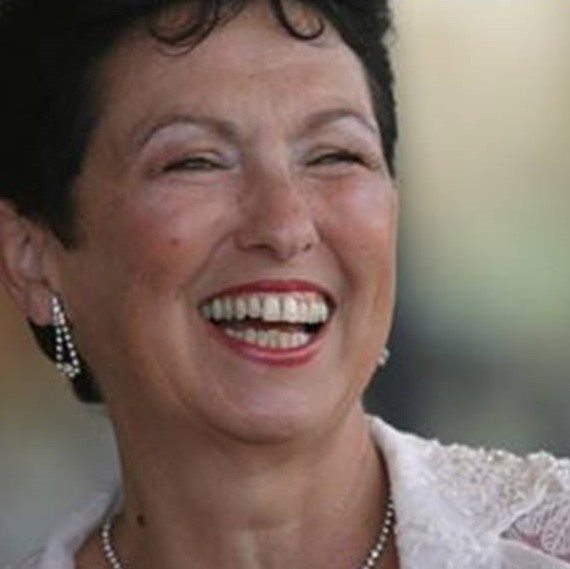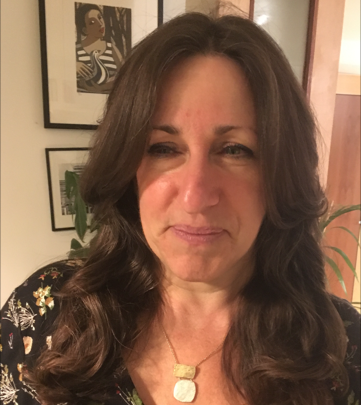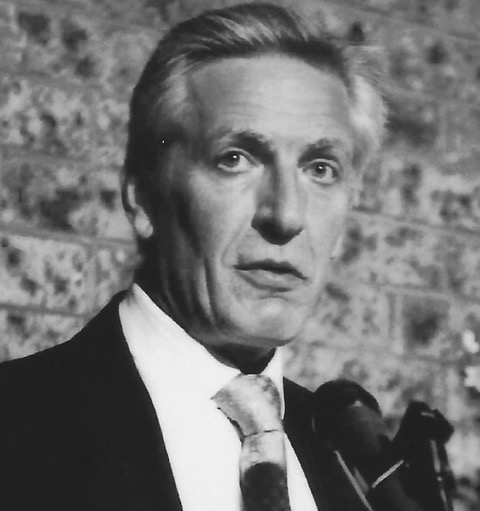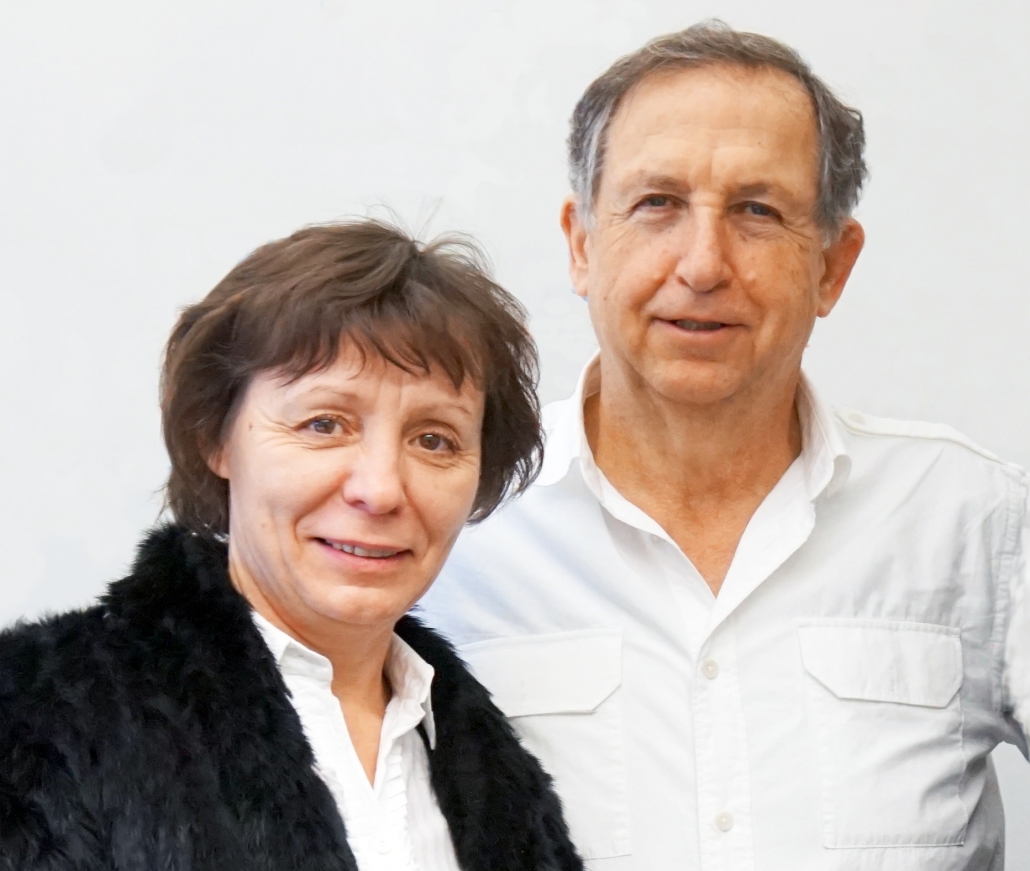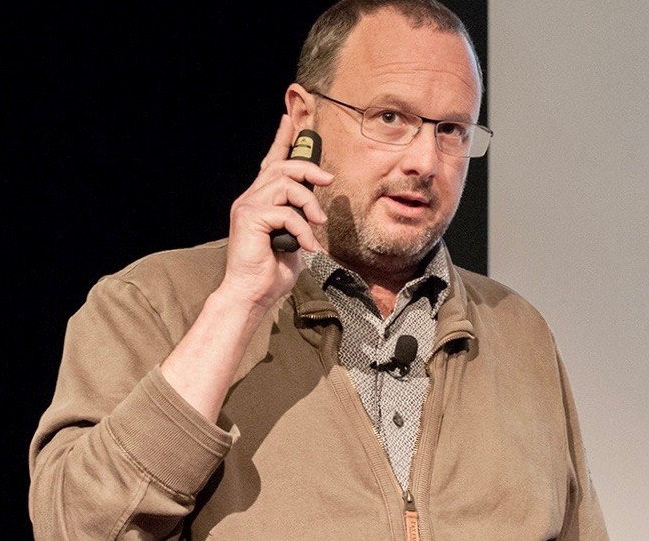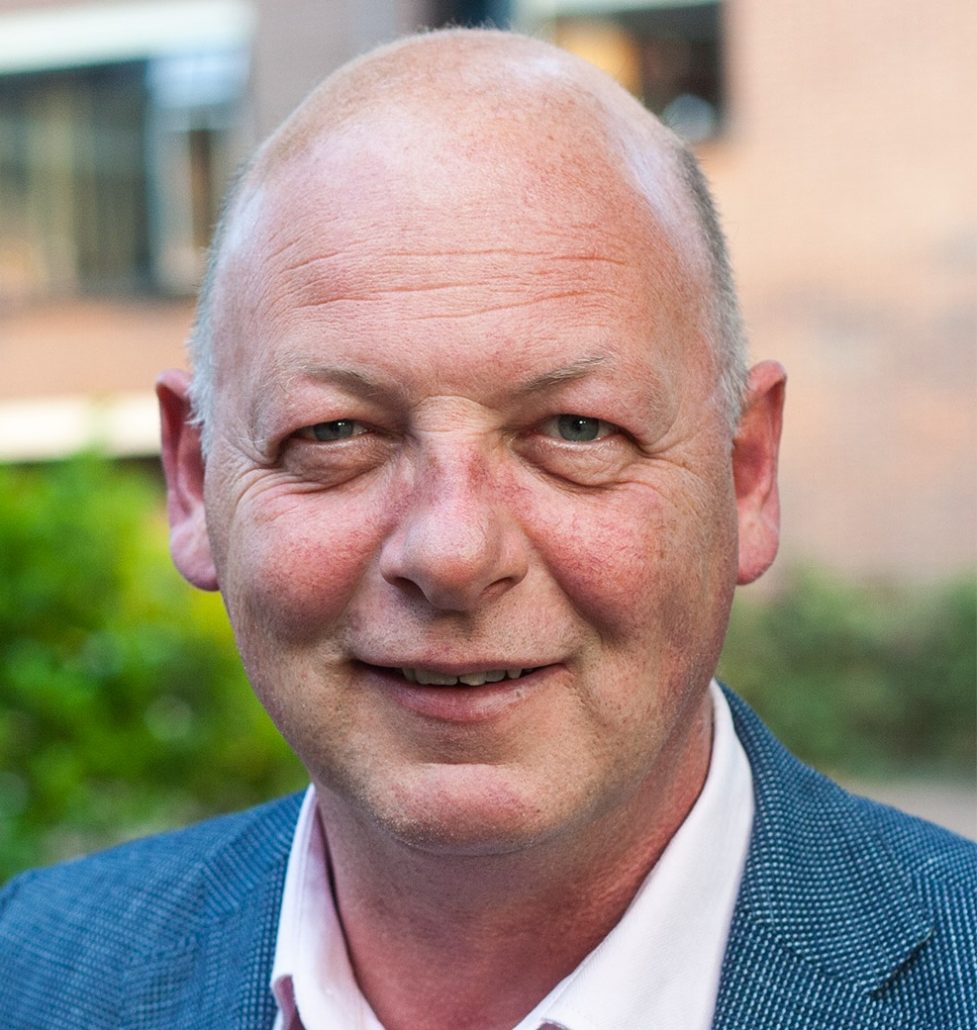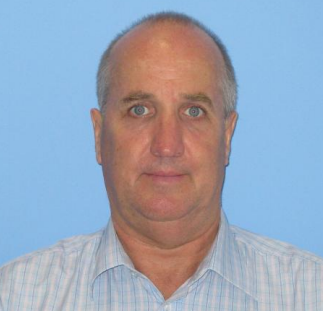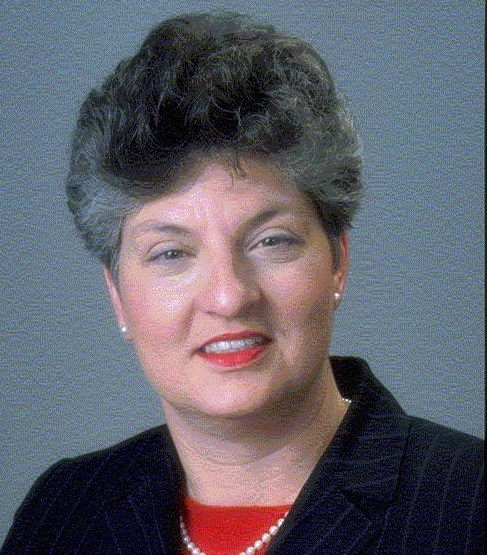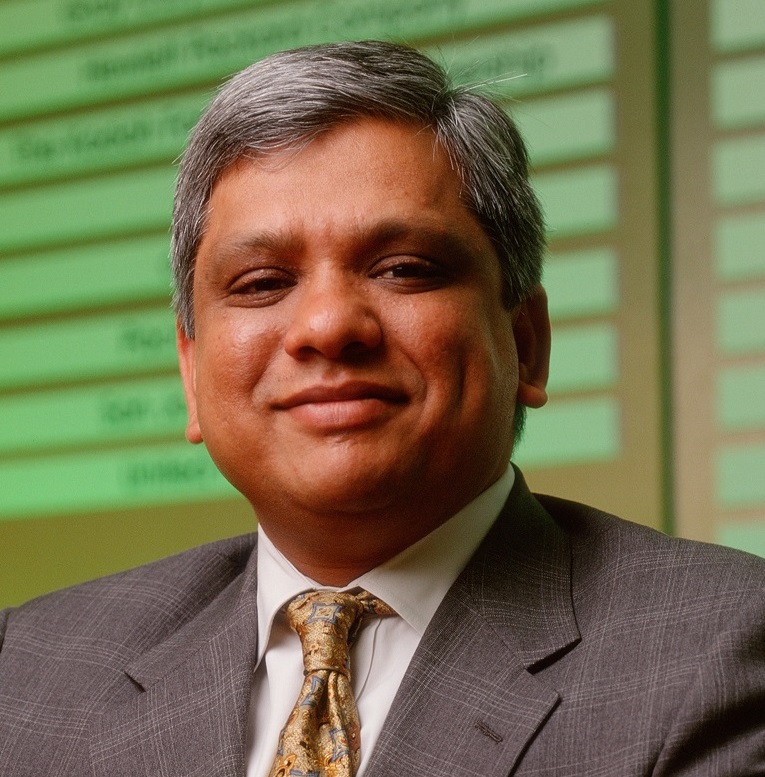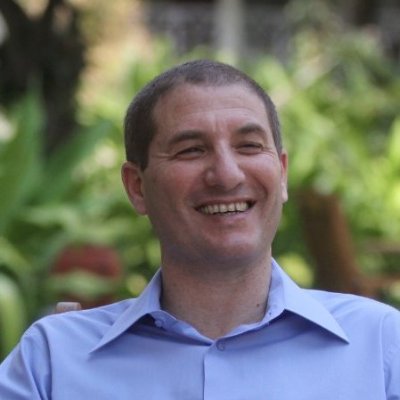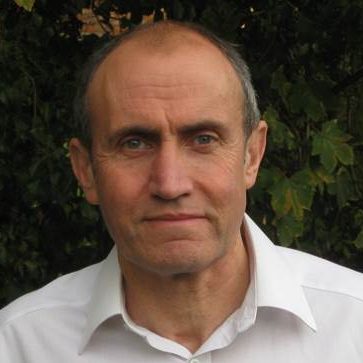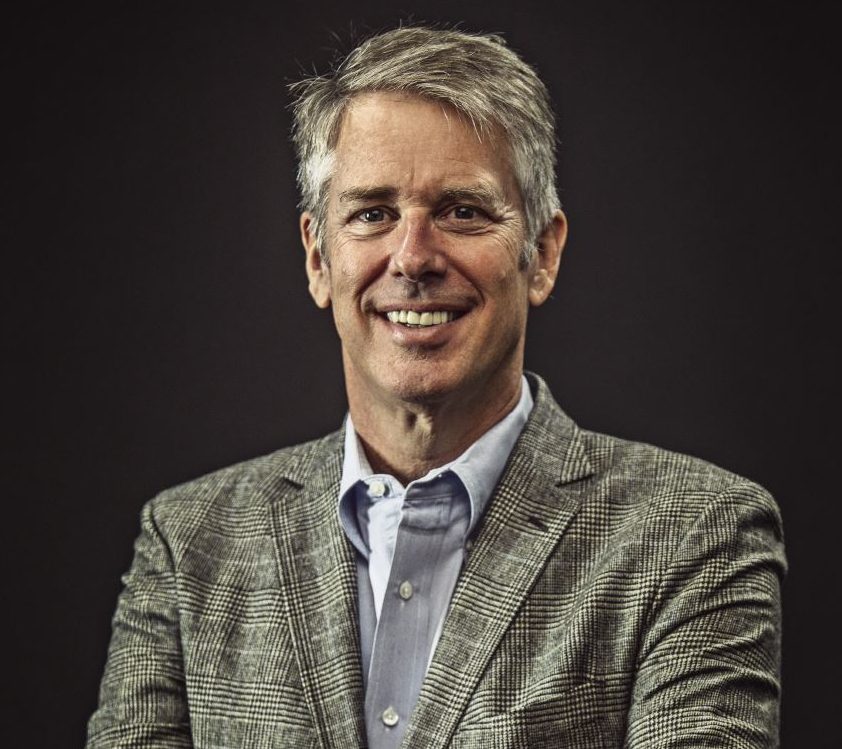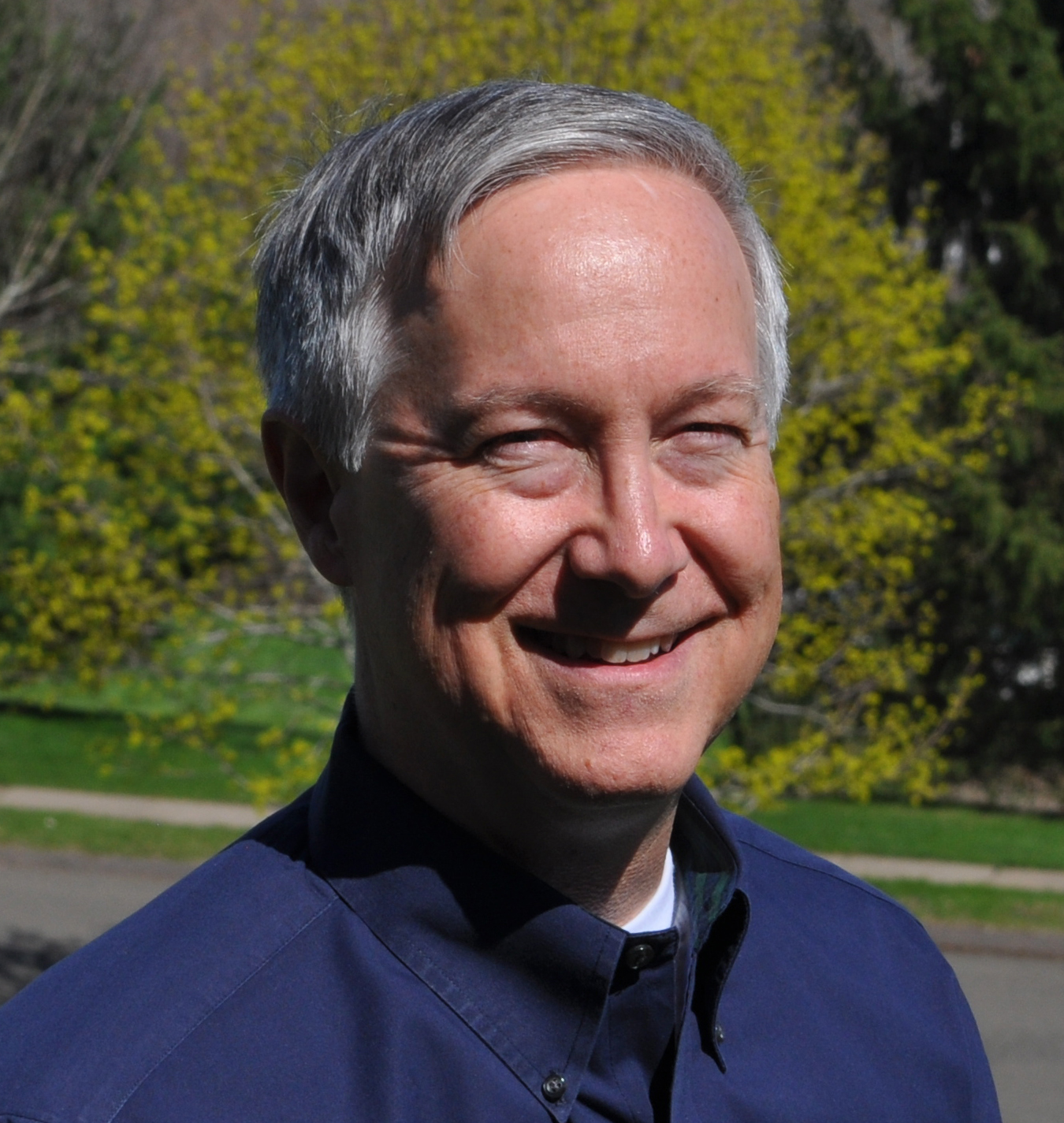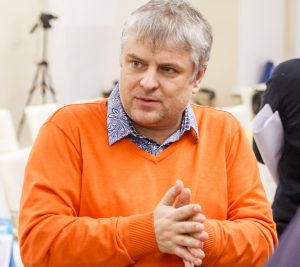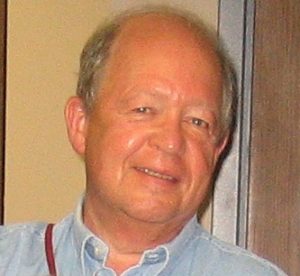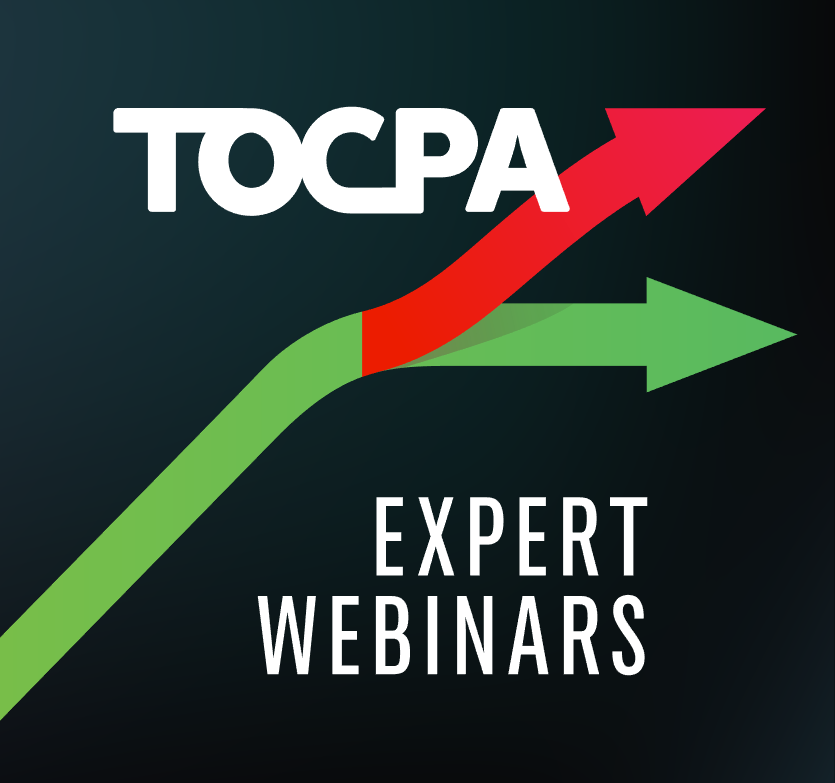
Free webinars from distinguished TOC Experts
On behalf of TOCPA and tocExpert Network we say Thank you to our long-standing colleagues and friends for contributing their time, knowledge and expertise to conducting TOCPA Expert Webinars.
Thank you to Nerius Jasinavicius, TOC sprendimai, for technical support.
By registering to the webinar you agree to receiving TOCPA and tocExpert TOC newsletters. If you do not wish to receive them please write to jelena@tocexpert.com
By clicking the button under the presenter’s photo on this page you will get to the presenter’s page to see the recording, pdf and discussion for every webinar.
SCROLL DOWN TO SEE THE RECORDED WEBINARS
NEXT WEBINAR will be announced
Recorded Webinars
Philip Viljoen
A TOC Application to Agriculture? Regenerate!
20 October 2022
Content
Regenerative agriculture is an important topic in conditions of climate change and global need for agricultural sustainability.
Philip Viljoen shares his views and suggestions about these important subjects. The discussion is conducted by the panel of TOC experts.
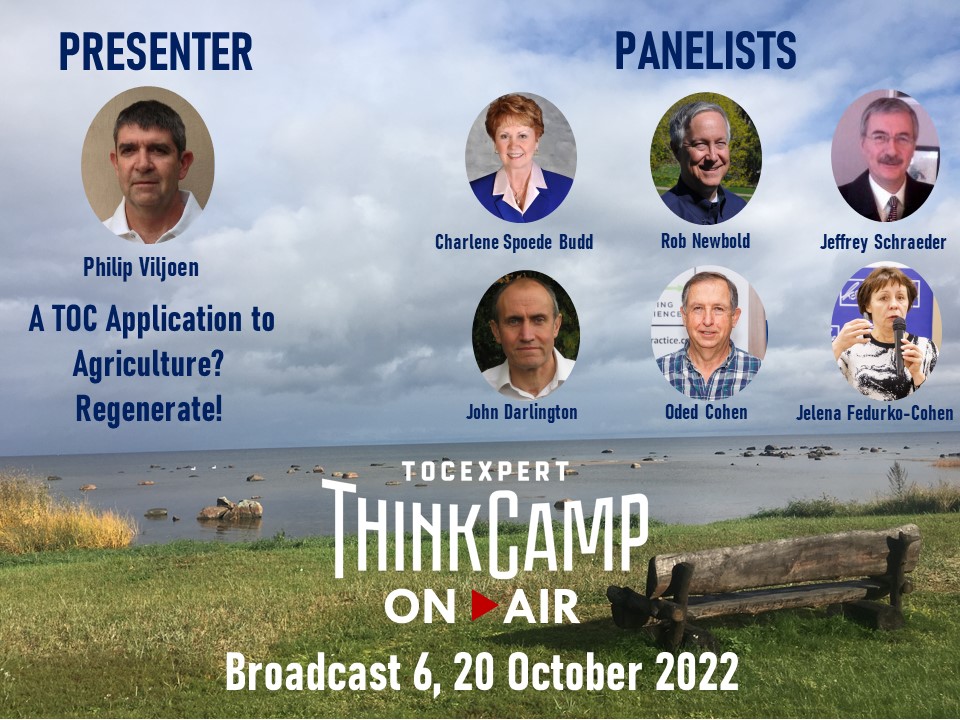
COVID-19 Webinars: Thinking about what businesses can do
Oded Cohen – Nerius Jasinavicius – Jelena Fedurko-Cohen
26 March, 9 April, 23 April, 5 May 2020
Content
TOC has been around for more than 40 years.
Throughout these years the world has experienced several economic crises. We have been there and have helped our customers while dealing with the challenges they have been facing.
In the last couple of months the world is facing Covid-19 crisis. We would like to share with the TOC practitioners our views of what can be done in the current situation – that we hope will be over soon, and how to prepare for the recovery period which may take long.
The TOC way means that everything that is said and stated should be logically checked. Statements that are spread through mass media and social networks may unnecessarily throw companies into despair and may lead them to take harmful measures.
We address some of these statements and voice our views, based on logical analysis. We are not in the competition of whose opinion is right, and whose is even “righter”.
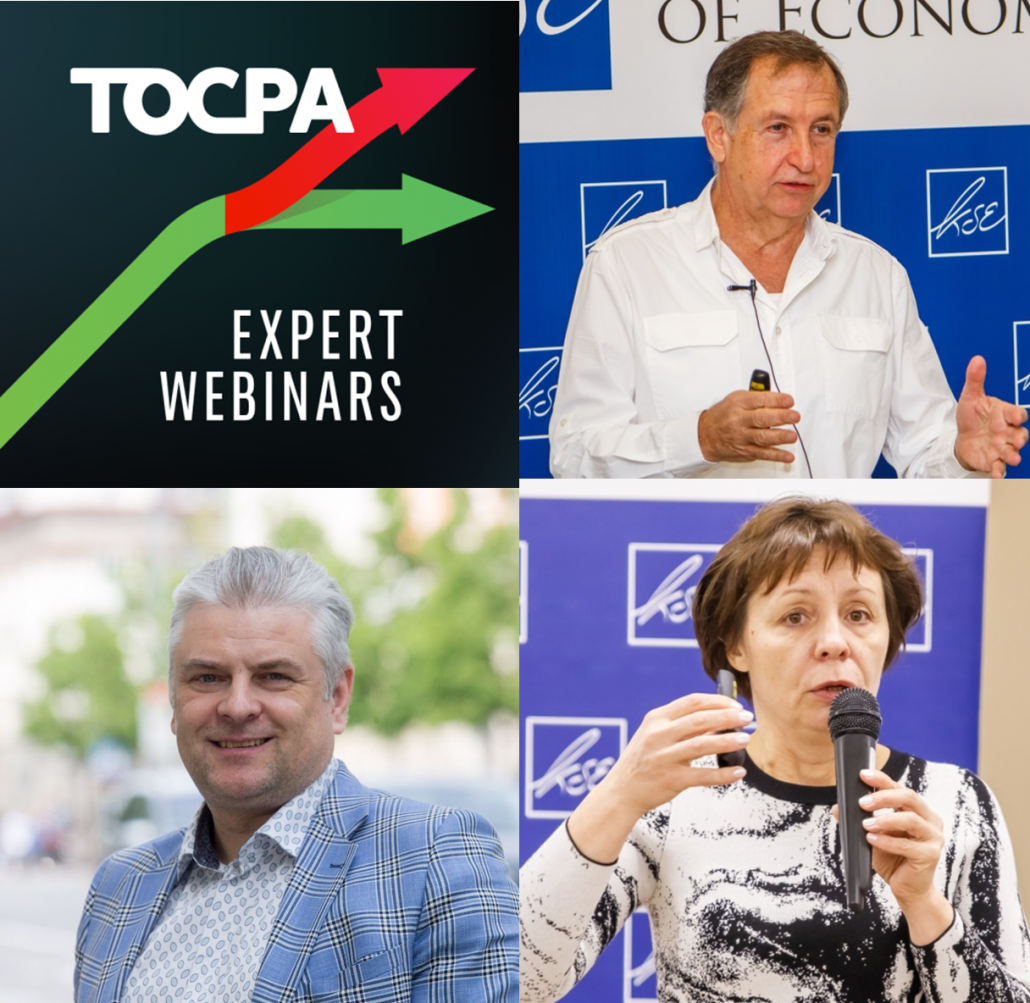
Oded Cohen
The historical view of the development of the concept of the Constraint
12 February 2020
Content
In this webinar Oded shares his overview of the historical development of the understanding of The Constraint that he presented in the January 2020 broadcast of ThinkCamp OnAir.
The reasons for this webinar:
- The multiple definitions of Constraint, even within the TOC Community
- Definitions relate to the time line of TOC
- Throughout the years of working with Eli Goldratt we have gone through the expansion of the understanding of the Constraint and its applications for managing systems
- Oded will share the evolution – the mind-set and the process
- And, will suggest a practical way to get out of the disagreements (among the practitioners) and confusion (of clients and new comers)
Jelena Fedurko-Cohen
About the Constraint – in a Simple Way
11 February 2020
CONTENT:
The name “Theory of Constraints” (TOC) clearly announces that this approach deals with The Constraint(s).
TOC practitioners use TOC in their work in their systems or in the systems of their clients, and use the term Constraint.
Hence, for all practical purposes, we should know what it is – “The Constraint” in the approach that is called TOC.
The only justification of debating about something is when the subject of the debate is needed for something practical.
This webinar looks at the issue of “What is the Constraint in TOC” from the perspective of the existent TOC solutions.
Nerius Jasinavicius
Using TOC implicitly at the Board of a non-TOC company
28 January 2020
Content
It is not unusual for top management (C-level and board-level) to be skeptical towards management methodologies, especially when appraisal comes from consultants. They “been there and done that” or “their company is different and unique”. Therefore one using TOC tools and recommendations explicitly can face resistance and rejection. But TOC can be used implicitly and still bring results. During the webinar I will share my experience of using TOC implicitly working with top management of multi-million companies.
About me
Managing partner of a consulting company TOC Sprendimai, a Founding Member of TOCPA, Member of the Board at Achema Group.
Since early 2000 I have been working as a TOC expert and trainer in Lithuania, Romania, Russia, Moldova, Ukraine, and other countries. 7 years ago I built a special training program for entrepreneurs and small business owners “From Craftsmanship to Business”. This program mergers tools from E-Myth, TOC and LEAN and is tailored specifically for small companies. I recently wrote a TOC book “Nuo amato prie verslo. Pradzia” (From Craftsmanship to Business. Beginning), published in Lithuanian, English and Russian.
Jelena Fedurko-Cohen
A series of Webinars on Thinking Processes
Webinar “Insights into 5 Focusing Steps: Talking about the Constraint”, 12 Nov. 2019
In this webinar I share my observations about the difficulties people encounter in understanding and interpreting 5 Focusing Steps and present new thoughts about understanding of the constraint.
Webinar “Why it is WRONG to use the Cloud for decision-making”, 08 May 2018:
Quite often there is an ERRONEOUS perception that the Cloud helps to choose between the two conflicting actions – the ones that are written in D and D’. This erroneous understanding leads people to think that the Cloud is a good tool for decision-making.
In this webinar I explain why it is not. We will go step by step through the detailed examples to understand why the Cloud cannot and should not be used as a decision-making tool.
Webinar “Insights into handling people’s Yes, But…”, 19 Oct. 2017:
In TOC the phrase ‘Yes, but…’ is routinely linked to the Layers of Resistance – the most used TOC approach to handle the process of change. This webinar shows:
- the common confusion between Yes, but… that introduces a perceived potential outcome (Layer 4) and Yes, but… that introduces an obstacle (Layer 5);
- how to recognize from the response whether the person is concerned about the potential negative outcome or an obstacle;
- how to recognize whether the reservation is Layer 4 or 5 or only sounds as Layer 4 or 5 (while disguising Layer 2 – direction of the solution);
- the difference between an obstacle and an UDE;
- the difference between resistance and disagreement;
- the common mistake of labeling Categories of Legitimate Reservations as ‘resistance’ or ‘conflict’.
About me
I have been extremely lucky and privileged to think and work with outstanding thinkers in linguistics, semantics, learning, communication, and TOC. Thinking with thinkers means intensive asking and being asked, agreeing and disagreeing, and being agreed and disagreed with, challenging and being challenged, being invited to see their thinking paths and showing mine. It has been a rare and precious gift that has brought me to be very conscious about thinking.
Not less have I received from everyone I have taught and consulted. It is helping them see and work their way through TOC logical tools that continuously helps me develop the HOW to use the tools, which I have recorded in my four books on TP: Behind the Cloud – Through Clouds to Solutions – Mistakes and Difficulties in Working with TOC Logical Tools and A Good Strategy & Tactic Tree.
I so much agree with Ted Hutchin about living life in crescendo! I only think that what we once were is not behind, it is what crescendo is building up on.
Jelena Fedurko-Cohen, Humberto Baptista, Oded Cohen
Talking about Thinking Processes for Supply Chain.
Part 1: Understanding the Core Cloud for Supply Chain.
Part 2: Constraint, Thinking Processes and 5 Focusing Steps
12 April & 10 May 2019
Part 1
In his webinar The Layers of Supply Chain Synchronization, Humberto touched upon several issues regarding TP for Supply Chain. It is an interesting subject, and we have decided to look into it in more detail.
Part 1 is the exchange of views and joint thinking between Humberto and Jelena on the issue of the Core Cloud for Supply Chain. Jelena presents her detailed analysis of the Supply Chain Core Cloud – what is apparent it it and what is ‘between the lines’:
- looking in detail into the well-known assumptions behind the arrow B-D,
- making the analysis of the logical clusters,
- presenting and classifying more assumptions behind B-D.
Part 2
Part 2 is an active discussion between Humberto, Jelena and Oded and important issues of:
- 5 Focusing Steps as a Thinking Process on its own,
- what is Constraint and what is not,
- difference between a Constraint and an Obstacle,
- the content and the meaning of each of 5 Focusing Steps in relations to specific Thinking Processes tools
- discussion about the difference between the TP tools that can be used for 5 Focusing steps in the process of developing a solution vs applying a solution.
Humberto Baptista
The Layers of Supply Chain Synchronization
14 March 2019
Content
TOC solutions enable the synchronization of the supply chain with the actual demand, but the focus has been on moving products with little attention and support to other very important aspects of supply chains that also should be synchronized with demand. Namely: prices, mix & NPI and investments & financing. This webinar presents the challenges to deepen the synchronization of the supply chain in a sequence of layers and what does TOC add to these questions.
About Humberto Baptista
Humberto holds a BsC and MsC in Computer Science and an MBA, he is the CEO and founder of Vectis Solutions, a TOC Consulting company and was a member of Goldratt Group as TOC Expert for Goldratt Consulting and Faculty Member for Goldratt Schools. Humberto led many projects ranging from leading Viable Vision projects on Consumer Goods and Retail to functional implementations in manufacturing, projects and services, led translation efforts (TOC Insights, GS material, GWS in CCPM and Viable Vision S&Ts), taught TOC VV Application Experts in Logistics, Project Management and Sales & Marketing and Project Leaders in many countries. His current interests include: TOC Principles, Implementations guided by S&Ts, advanced topics of TOC Finance, TOC for Retail, TOC for NPO (including Government, Health and Education), TOC4E and techniques for teaching TOC.
Dr. Ted Hutchin
The power of the Transition Tree
21 February 2019
So why am I doing this webinar?
When I met Oded and Jelena back in 2018 Oded observed that I was one of a very small group of people still using the Trt and yet surely as a powerful tool contained within the TP it should be more widely used – after all it has so many applications.
Where did my interest in the Trt begin?
During the Jonah Programme – the second TP example at Ashridge in 1991, I attended with many of the TOC community in the UK at the time and stayed with my friend David Marks who lived close by. When the Trt was presented we both struggled with it and so, on the way back to David’s home, we decided to think about the course we were running the following week for IBM teaching them about manufacturing. As David went through the four days of the course, working our way through the structure we had used for some time, I quickly realised that he was talking a Trt even if neither of used that structure!!!
So maybe it had some merit after all!!!
About me!
After 30 years of working with TOC and the TP, in all manner of organisations right around the world, it would appear that some people think I might have something to say. Currently I would describe myself as semi-retired, a writer, and essayist with a blog, a Benedictine Oblate, a coach and mentor, a spiritual director, chaplain to both Police and Fire Service but most often, husband, father and grandfather – truly wonderful. Eli once said to me that grandchildren are the gift you get for not killing your kids! I would agree with him that holding your first grandchild exceeds that of holding your first child. A legacy truly passed on.
I might also mention being an ex sailor, ex rugby player, ex academic, ex soldier as a radar engineer but they are all behind me now. It’s what lies ahead that is exciting, living life in crescendo!
Dr. Shoshi Reiter
To bring about Happiness at work – Utopia or Reality?
28 January 2019
Content
We live in V.U.C.A world of rapid changes that challenge leaders to create team cohesion and supportive environment in order achieve organizational goals. In the last decade, the search for happiness discourse reached the business arena. Recent findings show that happiness has positive correlation with productivity and flourishment. PERMA’s five dimensions of happiness offers a conceptual frame while TOC offered the basic and instrumental “know- how”. In the Webinar, practical intervention program of happiness model, in light of Goldratts’ road map to full life will be discussed.
About Dr. Shoshi Reiter
Dr. Reiter is an organizational consultant and TOC international expert, and the owner of LeadTOC center – Mentoring, Tutoring and consulting people over the world for human capital development. She is focusing on leading people through practical processes, organizational learning and achieving results. Her interest is in happiness and flow-centered processes for ever flourishing. She is delivering a variety of seminars. Among them are “To bring about happiness at work” and “Exceptional Leaders”.
Debi Roberts
Using TOC for suicide prevention. The Elliot Strickland Lecture.
17 December 2018
Content
The Elliot Strickland Lecture presented by Debi Roberts provides a personal overview of the current mental health crisis and how TOC was used to stop someone ending their life when the Mental Health Crisis Team couldn’t.
About Debi Roberts
Debi Robers, MA Ed, is a Project Officer for YC Hertfordshire, part of Hertfordshire’s Children’s Services in the UK. Here she leads on a young person’s peer to peer project within two A&E Departments and a new CBT programme for teens who are beginning to show early signs of distress. Debi is an Emotional Wellbeing Practitioner, educational author, Mental Health First Aider and the CEO of suicide prevention charity, The OLLIE Foundation. She is also the Voluntary Director for TOC for Education in the UK.
Andrew Kay
Using CCPM to stay on course and stay calm in a volatile project environment. Lessons from a Virtual PMO.
10 December 2018
Content
The project Involves the separation of shared Information and Telecommunication infrastructure between 2 businesses. One of which is being prepared for sale on the market (high stakes). The companies have operated as a group historically and as a result share common infrastructure across both businesses and their respective (multiple) sites across Australia. Involves 3 large scale external technology companies (each with their own method of project management) working interdependently with the two businesses. All under the umbrella of CCPM.
The Webinar shares the journey of setting up, planning and executing the project staying on track when significant curve balls are thrown across the path.
We walk through a process to immunise against most common outbreaks of variability and how to set up for a collaborative and helpful consortium that share alignment and willingness of purpose.
About Andrew Kay
After starting in 2001, and now with more than 85 successful business transformation projects across many industry sectors, Andrew is recognised as one of Australia’s foremost Theory of Constraints (TOC) thinkers and practitioners.
He has acquired a wealth of knowledge and experience on the critical TOC know-how to bring about successful and rapid transformative change to people and business. Andrew helps businesses rapidly achieve their goals through education and guided implementation of customised TOC solutions that are systematic, concrete, highly visual and simple to run.
Andrew has worked with small, medium and large clients across all TOC disciplines: Operations (DBR), Distribution Logistics (Replenishment) Project Management (Critical Chain), Sales, Throughput Accounting and is a practicing “Jonah” and certified by the TOC International Certification Organisation.
Andrew is a dynamic and engaging presenter contributing case studies and new knowledge to international TOC conferences. He has presented practical talks, seminars and workshops on TOC and TOC/Lean and CCPM to many industry groups including APICS, AIGroup, NSW Business Chamber, Enterprise Connect, FAPM, Rotary and Australian Manufacturers for Excellence and the Sydney Chapter of the PMI. Andrew is currently very active in promoting CCPM into the Sydney PMI
He has worked extensively in Australia and New Zealand, also in Singapore, the United Arab Emirates, Indonesia, USA and Japan.
In 2013 he became the National Director of TOC for Education Australia Inc., whose purpose is to teach the TOC critical thinking tools to children to help them on their way at school and in life. Andrew is currently working on a major project to introduce the Thinking Processes into the education system in Australia.
Oded Cohen and Jelena Fedurko-Cohen
More thoughts about “Why Change?”
22 October 2018
Content:
In this webinar Oded and Jelena share their thoughts about why it is often difficult to bring change to organizations and make it sustain.
Clarke Ching
The FOCCCUS Formula
12 June 2018
I wrote a TOC book, but it’s not meant for you.
About Clarke
Gijs Andrea
How to really significantly improve Timeliness, Quality and Job satisfaction in any Service Organisation without having to invest large amounts of money
29 May 2018
Content
It seems that every Service Organisation is coping with the same problems: workers are very, very busy experiencing a lot of stress, while customers experience very, very long waiting times, maybe also often leading to stress.
This may be one of the causes why those two groups usually don’t seem to like each other. And the funny thing is: most of us change roles on a daily or at least weekly basis: we all are customers of healthcare companies, the government, Telephone companies, Electricity companies and so on and so on. And a lot of us are working in or for one of those companies. So at least there is a kind of common interest to search for improvement: less stress AND shorter waiting times, with at least the same, but preferably better quality.
In this webinar Gijs points out six elements of a TOC based solution to improve your (any) service company significantly. The elements are simple and have proven to be very effective in all kinds of service industries without any investment in extra capacities. They are not easy to implement nor to sustain over time, but they are definitely worth a try and great fun to work with!
About Gijs
Gijs is a founding partner of the International House of TOC (iHOT), an organization dedicated to education and implementation of the Theory of Constraints. He is working closely together a number of other TOC Experts for solution development, education and implementation.
Gijs became aware of TOC some 35 years ago, when Eli Goldratt introduced his first business novel The Goal. Gijs has achieved his MSc TOC Healthcare Management at the Nottingham Trent University in the UK.
Gijs played a leading role in the introduction of the Theory of Constraints into the healthcare system in The Netherlands. Gijs has worked on many TOC implementations in both The Netherlands and the UK.
His newest development is the introduction of TOC in service industry. Together with 3 of his colleagues he wrote two books on that subject: The Service Factory and The Project Factory (only available in Dutch at this moment), which describe the general TOC solution for service companies and the way to implement it. He implemented this solution in several service industries, like Housing corporation, Child Protection Agencies, Software Development companies and IT departments.
Robert Bolton
ThroughPut Focused Mining:
Applying ToC to MINING
18 April 2018
Content
The mining resources industry covers the exploration, extraction and processing of resources that create the metal and minerals of what feeds our modern society.
Mining is a driving force for industrial and economic development. The metals and minerals products from mining are key raw materials that enable economic growth. It is also one of the oldest industries, often taking place in remote and hostile locations. Mining is a highly leveraged industry. Once a site is operational, it is largely market unconstrained. Once processed, all products can be sold. These businesses tend to be functional or silo organisational structures.
The industry is noted for its interdependencies, relationships and many potential leverage points. Although many in the industry see no excess capacity, hidden capacity can be found and released.
Although a capital intensive business, the returns (RoI) can be significant if the operational flow, sales and marketing effects are aligned. This does not always happen.
In this webinar, Robert will give an overview of the size and value of the mining business. He will explore his experience across 14 mining business units, focusing on the operations where he has applied ToC and supporting systems thinking approach and methods. He’s applied different change management scenarios and methods to create a stable and ThroughPut Focused Mining (TFM) business management system.
It is Roberts view that if global growth continues its current path, then the demand for minerals and metals product will drive another mini mining boom. The mini boom will stretch existing operations, and the capability for the people in the industry. There will be opportunities ahead.
About Robert Bolton
Robert is an executive & project thought leader. He has won and led significant projects that have to increased profit, throughput and overall business capability. He is results driven, influential and a builder of key relationships with clients and stakeholders. He builds teams that execute plans. He builds processes and systems that support this capability.
Roles include Chairman, Executive Director, Non-executive Director, Program Executive, Project Director, Project Manager, General Manager.
Business experience includes:- infrastructure, construction, mining, oil & gas, capital markets, banking, insurance, information technology and software development.
Carol Ptak
The Search for Relevant Information
3 April 2018
Content
Today organizations are frequently drowning in oceans of data with little relevant information and large stocks of irrelevant materials (too much of the wrong stuff) and not enough relevant materials (too little of the right stuff). When this occurs, there is a direct and adverse effect to return on investment. Sophisticated analytics of bigger and bigger databases does not solve the problem but rather deepens the ocean of data. Companies search for relevant information so that decisions can be made that will contribute to ROI. A company cannot just indiscriminately move data and materials quickly through a system and expect to be successful. This presentation will show how relevant information will drive sustained ROI.
About Carol Ptak
Carol Ptak is currently a partner with the Demand Driven Institute and was previously a Visiting Professor and Distinguished Executive in Residence at Pacific Lutheran University. Before going to academia she was Vice President and Global Industry Executive for Manufacturing and Distribution Industries at PeopleSoft, where she developed the concept of demand driven manufacturing.
Ms. Ptak spent four years at IBM Corporation, culminating in the position of Global SMB Segment Executive.
Sanjeev Gupta
Webinar 1: Focus & Finish: Operating Motto for a Project Factory
Webinar 2: Role of Buffers in CCPM
Webinar 3: Project Planning for the Real World – A Tutorial
The webinars were conducted in the period of November 2017 to March 2018
About Sanjeev Gupta
Sanjeev Gupta is the CEO of Realization, a category leading provider of multi-project resource management solutions. Honored with its Lifetime Achievement Award in 2016 by the TOCICO, Sanjeev is also a past chairman of TOCICO and a founder of the Goldratt Research Foundation. He has authored many articles for prestigious publications including Harvard Business Review, APICS and Industrial Management.
In Sanjeev’s words, “I believe that factory-like delivery of projects and knowledge work is more important than ever because the demand for such work is increasing faster than the capacity to deliver it. As we have demonstrated numerous times with Realization’s clients that while we can indeed produce factory-like outcomes in projects and knowledge work, the process for doing so has to be different from what we use in manufacturing. I look forward to sharing my thoughts with TOC practitioners.”
Content of Webinar 1: Focus & Finish: Operating Motto for a Project Factory
Having an operating motto is very useful for countering instinctive behaviors that promote local optimization at the expense of global optimization. It also gives you good measurements and naturally drives continuous improvement. “Single Piece Flow” in manufacturing is an excellent example of such an operating motto.
I will present why “Focus and Finish” is to projects and white collar work what “Single Piece Flow” is to manufacturing.
I will demonstrate why “Focus and Finish” is the essence of global optimization in projects and white collar work, how CCPM and Agile both promote “Focus and Finish”, and how to enhance the CCPM solution to drive more of “Focus and Finish”.
Content of Webinar 2: Role of Buffers in CCPM
Contrary to popular myths and literature, Realization Technologies’ experience from more than 350 multi-project implementations and more than 2,000 large, standalone projects is that benefits of CCPM do not arise from buffer aggregation. They accrue from changing the mode of operation from “Spread Resources Thin” to “Focus and Finish”. Sanjeev Gupta, Founder and CEO of Realization, will share his views on CCPM Buffers in this light. Specifically,
- How CCPM buffers help in “Focus and Finish”
- Why 50/90 and other similar ways of estimating tasks can be counterproductive
- The wrong way and the right way to use buffer signals in execution
Content of Webinar 3: Project Planning for the Real World – A Tutorial
Two often-debated questions about project plans are: “How detailed should the tasks be?”and “”How many tasks should there be in a project plan?”. While these questions are important and practical, you cannot start there. It’s better to first answer, “What is a good project plan?” and “What is a task that should be on the project network?”.
Sanjeev Gupta, Founder and CEO of Realization, will answer these questions based on his company’s experience in more than 350 multi-project implementations and more than 2,000 large, standalone projects. He will use examples ranging from engineering and product development to construction and maintenance projects.
Mickey Granot
Thoughts about the Buy-In Process
Recording available soon
1 March 2018
Content
The buy-in process is the TOC recipe for leading people to commit to change. It is not about agreeing, it is about committing, assuming responsibility to take the necessary actions to implement change. It assumes people consciously (or not) follow a rigorous thought process when they evaluate change, and that when change is presented in a way that is aligned with this process, while allowing them to “pour in” some of the ingredients it will lead them to assume ownership on the resulting change and commit to it. The question is are there any instances that this assumption is wrong? When people do not follow a thought process, or maybe follow a different one? And in these instances what is the effect of using the buy-in process? What is the effect on not using an alternative process? Is there an alternative process?
About me
I have been involved in the development and dissemination of TOC since the early 1990’s working closely with Eli Goldratt for many years. I had the privilege to work with many of the TOC experts worldwide for many years as well as train many of them, and facilitate many TOC Experts upgrade training sessions. I worked with numerous organizations internationally implementing TOC solutions ranging from specific stand alone solutions to viable vision ones. I am currently a managing partner at Next-Era Consulting where we focus on helping top management of companies design and implement strategies that result with their company’s valuation following a red curve pattern.
John Darlington
Demand Capacity and Flow (DCAF)
28 February 2018
Content
The webinar will cover the Demand Capacity & Flow (DCAF) Modules of the MSc in Lean Enterprise course.
We believe strongly in “learning by doing” and so these modules are always held on the sites of the students. We teach and then apply what we have learnt as quickly as possible afterwards.
For Demand the audience will be introduced to FRED a forecaster
For Capacity the audience will be introduced to a rough cut capacity planner and also a Scheduler
For Flow we will introduce the audience to some of the feedback we always give the host site.
About John Darlington
John Darlington is the founder and managing director of Value Flow Consulting Limited, a UK based management consulting firm with clients based around the world.
Value Flow helps customers improve their performance by using a combination of Constraint Based Management & Lean Principles.
John worked for Honeywell Turbochargers from 1986-1999. During this time he held a variety of roles including Finance Director and IT Manager of the OE site and Operations Director of the Turbocharger Aftermarket. John Qualified as a Lean & Six Sigma Expert through Renault Institute and in Constraint Management with Goldratt Institute.
As Kaizen Director of United Engineering Forgings, the largest independent Forging and Machining business in the UK he led the systematic introduction of Lean Manufacturing across their 6 sites.
He combines application with teaching and became Head of Department for Business Science & Lean and also Director of the MSc in Lean Enterprise at the University of Buckingham. He teaches modules on Demand Capacity and Flow (DCAF) also Mapping. He has also developed Flow Accounting which he describes as the “practical face of Throughput Accounting
John has been a guest speaker at APICS, and SAPICS where he won the Toyota Prize for Best New Idea.
Henry Camp
Using TOC to make real money
19 February 2018
Content
There are trillions of dollars in ‘dry powder’ currently seeking investment. Sadly, its owners seem frozen – afraid – to invest these enormous sums. The amounts continue to accumulate and grow producing virtually no returns. This is a crime. The world needs that money put to work, for the jobs it could create, for the economic benefit it could produce and the profit waiting to be realized. This webinar suggests the process that any TOC practitioner can use, once they are confident enough in their abilities, to stop working for companies as temporary employee for fees and, instead, tap into a mechanism that earns a share of a business. The process described includes gaining the necessary sufficiency to become an owner and share in the wealth that is created by TOC injections. Even if you are security conscious, lack the personal experience to be ‘the boss’ or have never owned a company before, this webinar explains a way to cash in on your knowledge.
About Henry Camp
Henry Fitzhugh Camp currently owns and operates five companies as diverse as software development, manufacturing, distribution and 3rd party logistics. He is an ex-professor with over 30 years of experience in business. Henry is a practical entrepreneur who continues developing tools and methods which add sufficiency to achieve business success. He is a founder and managing member of TOC-Equity Partners, a private equity fund that buys companies, improves and resells them. Henry and his partner, Tom DeMuth, started IDEA, LLC over 20 years ago and has grown it into a regional leader in just-in-time warehousing and delivery with offices in five countries. IDEA also supports TOC consultants to bring value to their clients through flexible and affordable TOC software for improving inventory flow that allows people, for the first time, to really ‘see’ what their inventory is doing.
Rob Newbold
Change and the Partnership Paradigm
5 January 2018
Content
Rob continues the discussion he began at the 2016 International TOCICO conference by describing a radical departure from traditional change management approaches: stop trying to change people, and instead find ways to work with them to achieve common goals. He will describe how this “partnership paradigm” is becoming accepted in fields as diverse as education, medicine, and counter-insurgency. He will present a process for implementing it, and will talk about how it can be applied to consulting and the spread of TOC. There will be time for questions and discussion.
About Rob Newbold
Rob Newbold is CEO and founder of ProChain Solutions and one of the world’s leading experts on Critical Chain project scheduling and management. He has thirty years of experience developing process improvements in various fields. Rob is a frequent writer and speaker and holds degrees from Stanford University, SUNY Stony Brook, and Yale University. He is the author of the books The Project Manifesto, The Billion Dollar Solution, and Project Management in the Fast Lane and is a contributing author to Theory of Constraints Handbook from McGraw-Hill.
Gerry Kendall
Viable Vision – Bringing all of TOC together
18 December 2017
Content:
Viable Vision delivered my clients better results than any standalone TOC implementation I have ever done. It gave our family and associates a healthy income for over a decade. It was introduced by Eli around 2004. For me, it remains the most powerful of all TOC frameworks, yet many TOC people I talk with think it does not work or don’t fully understand it. The problem is not with the concept of significantly improving an entire organization. Rather, the problem is often with the engagement required by both the company and, if any, the consultant leading the implementation. In this webinar, I’ll talk about the necessary components of Viable Vision – the ones that make it work. While logistics often are one of the foundations of a Viable Vision, that is barely enough. Sales and marketing processes are often non-existent, at least in many of the companies I’ve worked with. Top management alignment must be nourished continuously. And a healthy dose of TOC management skills are important. I’ll share some of my client experiences and answer questions. I’ll also divulge my view of where TOC is not robust enough and share my current experiment in overcoming a 20+ year failure.
About Gerry Kendall
Gerry Kendall lives in the USA and has implemented TOC since 1994 worldwide, partnering with his wife Jackie. He and Jackie were initially trained by the Goldratt Institute (AGI) as a Jonah and Jonah’s Jonah, and took all the TOC application training offered. Jackie and Gerry incorporated TOC International in1995, and partnered with AGI and then Goldratt Consulting for several years. Before delivering Viable Visions, Gerry successfully implemented DBR, CCPM, TOC Replenishment, Marketing and Sales, Management Skills and Strategy (including 4x4s, Jonah Programs and Viable Visions). Gerry is the author of five books on TOC, and has many published articles and chapters in books on TOC, including the TOC handbook. You are welcome to contact him at gerryikendall@cs.com
Dr. Roy Stratton
From flow line to project management: Does TOC offer a unifying theory?
12 December 2017
Description
This webinar builds on Eli’s 2009 paper ‘Standing on the shoulders of giants’ broadening and deepening the links with operations best practice and theory. We will explore how established operations laws (principles) can be used to link the seminal developments, ranging from Ford’s flow lines to Goldratt’s project management. These developments are shown to use management signalling tools to resolve a common underlying conflict suited to different environments. TOC and buffer management is shown to be a natural extension of earlier systems approaches uniquely supported by the TOC thinking processes.
About me
I have worked alongside the TOC community on numerous projects since my first encounter in 1986 when, as a new lecturer, I was looking for interesting teaching materials. The Race, The Goal and the OPT simulator provided my kick start and the rest is history.
Over the years I have been part of Goldratt Schools, developed TOC based solutions for industry and for 8 years ran the MSc TOC (healthcare) with Alex knight and QFI Consulting. However, I have always been intrigued by the tentative acceptance of TOC by the academic community. TOC is not bound by traditional functional boundaries, which is a particular challenge to the artificially insular world of the academic. Therefore, my research has increasingly focused on looking to position TOC alongside established theory and practice in operations and supply chain management, the prime focus of this webinar.
Dr. Roy Stratton is based in the UK and is Principal Lecturer in Operations and Supply Chain Management at Nottingham Business School, Nottingham Trent University where he is actively involved teaching, research and consultancy. He is Director of the Centre for Performance Management and Lean Leadership and Programme Manager of the MSc Theory of Constraints (Health Care Management). Previously Roy worked for Rolls Royce Aero Engines in an internal consultancy role and has since been actively involved in a wide range of industry-based and government funded knowledge transfer research projects. He has published widely in both professional and academic journals and has co-authored two educational books.
Nerius Jasinavicius
Not a Workplace But Business
5 December 2017
Content
This webinar is an attempt to summarise my findings during 10 years of work with owners of small companies (up 50 employees). Everything started with one of my friends request to help in adapting “The Goal” for his 5-people company. Latter I came across a very famous book by Michael E. Gerber “E-Myth Revisited: Why Most Small Businesses Don’t Work and What to Do About It”. I have a vision of developing a Lego-like managerial toolbox (based on TOC and LEAN) for small business owners so they can ensure prosperity and growth of their companies. In this webinar I will share my achievements so far.
About me
Managing partner of a consulting company TOC Sprendimai, a Founding Member of TOCPA. Since early 2000 I have been working as a TOC expert and trainer in Lithuania, Romania, Russia, Moldova, Ukraine, and other countries. 7 years ago I built a special training program for entrepreneurs and small business owners “From Craftmanship to Business”. This program mergers tools from E-Myth, TOC and LEAN and is tailored specifically for small companies. I recently wrote a TOC book “Nuo amato prie verslo. Pradzia” (From Craftsmanship to Business. Beginning), published in Lithuanian and now being translated to English and Russian.
John Covington
Management Attention – a key constraint or something deeper?
13 November 2017
Content:
I first would like to thank Jelena and Oded for asking me to present this webinar. It is always fun to share what we think we have learned and to discuss with others. I hope the webinar lends itself to some discussion.
I formed Chesapeake Consulting nearly 30 years ago with a tag line “In Business to Help Make a Difference.” Over the years several marketing firms and other folks convinced us to change the tag line. However we are back to the original one because it just seems to fit. So what does that mean? Of course it implies some sort of movement to a better state of being. Why not just, “In Business to Make a Difference?” Well, we work with organizational systems. Eventually they must be the main driving force in “making a difference” within their own system. Chesapeake’s role is to meet the organization or individual where they are currently and help disrupt them in a manner to initiate change towards a better state of being. It is a flow process.
After nearly 20 years of being in industry and the military I was exposed to TOC as a client of Bob Vollum’s when I was running, what was then, the largest paint manufacturing complex in the world for Sherwin-Williams. I had actually been exposed to TOC much earlier and just did not know it. Any sophomore in chemical engineering quickly learns that to successfully complete a material and energy balance of a complex system they must first find the limiting resource. That resource determines material flow thus everything else in their analysis. We employ knowledge from other sources besides TOC. However, the TOC perspective and tools are essential for our company to “Help Make a Difference.”
This presentation will start with a “picture” we developed of an organizational system. From that picture we will briefly discuss issues such as clarity of purpose, processes, organizational culture and what drives the system. We will then spend some time on “management attention” and perhaps it being an effect of one’s level of leadership maturity.
We will then use the Chesapeake Leadership Model to explore what within that individual leader impacts the effect of “management attention.” If you want an early peak at the Chesapeake Leadership Model it was first introduced in my book Enterprise Fitness and is used in my most recent book Cows Don’t Stay Milked. You can get both of these books from Amazon or from the Chesapeake website www.chesapeakeconsultinginc.com
When I am not working at Chesapeake I enjoy hanging out with my wife Linda, going to Alabama football games, training working dogs and volunteering to facilitate classes in prison.
Oded Cohen
The growing need for Analytical Capabilities
31 October 2017
Content:
The need for analytical capabilities increases with the advancement of information systems. The recent trend in manufacturing is Industry 4.0. The concept of DSS – Decision Support Systems that was developed in the 1980’s is transformed from support function into active control of the systems. Many new computerized systems have the ability to ascertain big (actually huge) amount of data items, process them and continuously learn and improve their modeling. Industry 4.0 employs and will continue to employ more and more of these IT systems. However, these IT systems have to be developed. As such there is a need to design these systems, to give clear instructions how to process the data and how to convert it into practical commands for actions. After creating the initial working model there is a need to design, collect and process feedback signals as per learning mechanisms.
We believe that TOC has the potential to be involved and contribute. This can be done with the TOC methodology – the full U-Shape structure. Some of the TOC applications have already these capabilities. For example in managing stocks the TOC way – the size of the buffers, which are the heart of the replenishment systems, are subject to DBM Dynamic Buffer Management which signals the need for change in the buffer sizes – and is capable of doing so on their own accord.
About me
I am a system person.
When I was in high school I wanted to be an architect. I was only half a year older than my country – Israel. A country that was, and still is, on constant growth, starting in 1948 from nearly nothing.
After serving in the army and fighting in the six day war I decided to move to manufacturing. I studied Industrial Engineering and did my master degree in Operations Research. I worked in large logistical systems and then became the head of the computer department of a large manufacturing company.
I lead the development and implementation of a home grown integrated manufacturing systems – based on COPICS (MRPII)
I met Eli Goldratt in 1978 when I needed a shop floor scheduling system and his OPT was a perfect option for us.
The personal click with Eli was immediate. We shared the passion for systems and for systems improvements. I had been close to him in different capacities until he died in 2011.
Dr. Ted Hutchin
Inherent Simplicity of TOC/TP, A road travelled
10 October 2017
Content:
This webinar is the result of a comment I made on the TOC Practitioners Worldwide forum on Facebook. It was suggested that others might like to know a little more about my observations about using TOC/TP for organisational and personal relationships. To do that requires a little more background, and even more about my evolving use of the TP and why I find it to be an excellent tool for understanding and communication. So, something about my journey, something about my use of the TP to tell the story of those I am working with, a story they tell and I capture. And some reflections about where I am and where I might think I am heading with new ways of using the TP for understanding and communication.
About me!
After 30 years of working with TOC and the TP, in all manner of organisations right around the world, it would appear that some people think I might have something to say. Currently I would describe myself as semi-retired, a writer, and essayist with a blog, a Benedictine Oblate, a coach and mentor, a spiritual director, chaplain to both Police and Fire Service but most often, husband, father and grandfather – truly wonderful. Eli once said to me that grandchildren are the gift you get for not killing your kids! I would agree with him that holding your first grandchild exceeds that of holding your first child. A legacy truly passed on.
I might also mention being an ex sailor, ex rugby player, ex academic, ex soldier as a radar engineer but they are all behind me now. It’s what lies ahead that is exciting, living life in crescendo!
